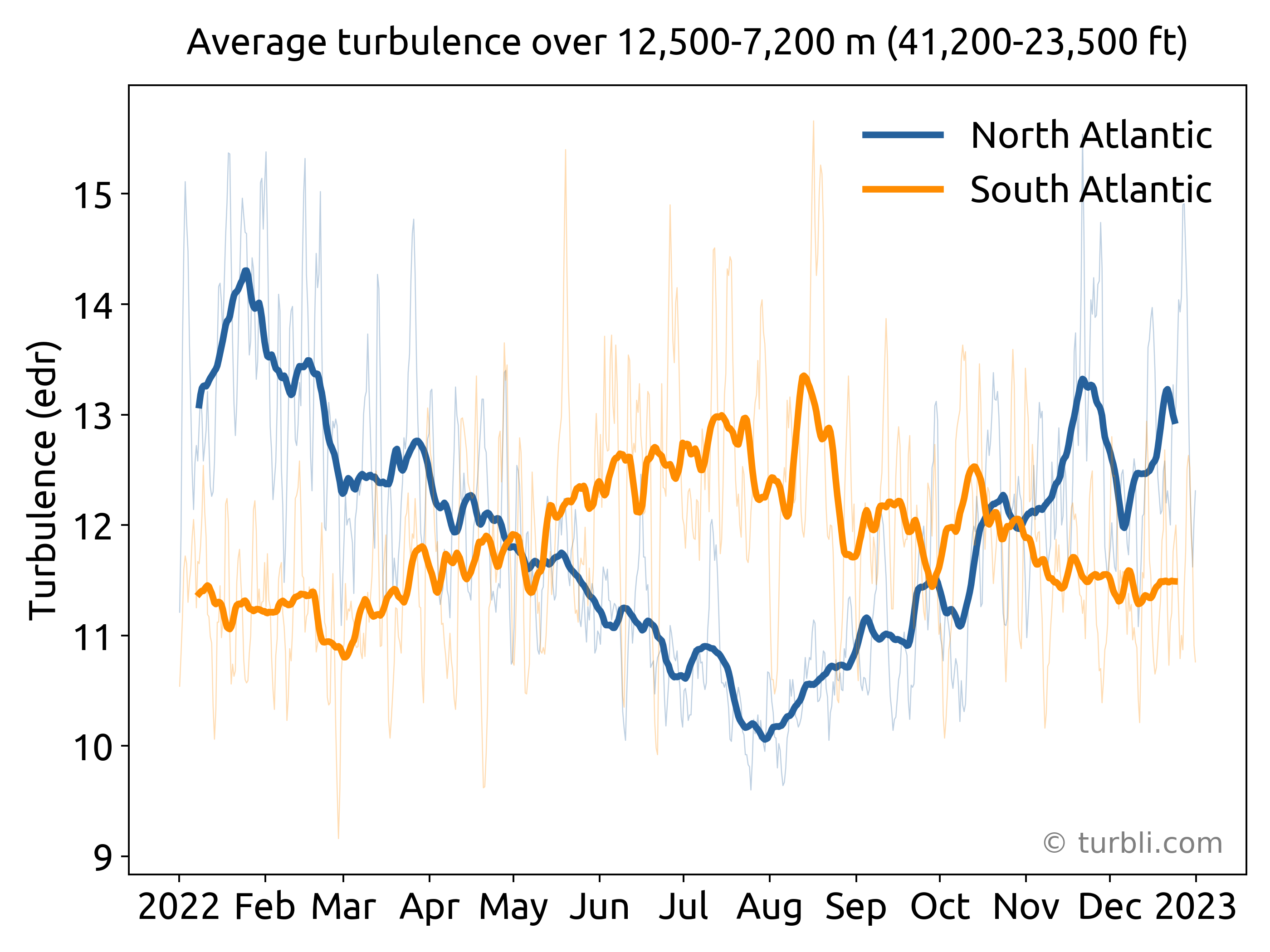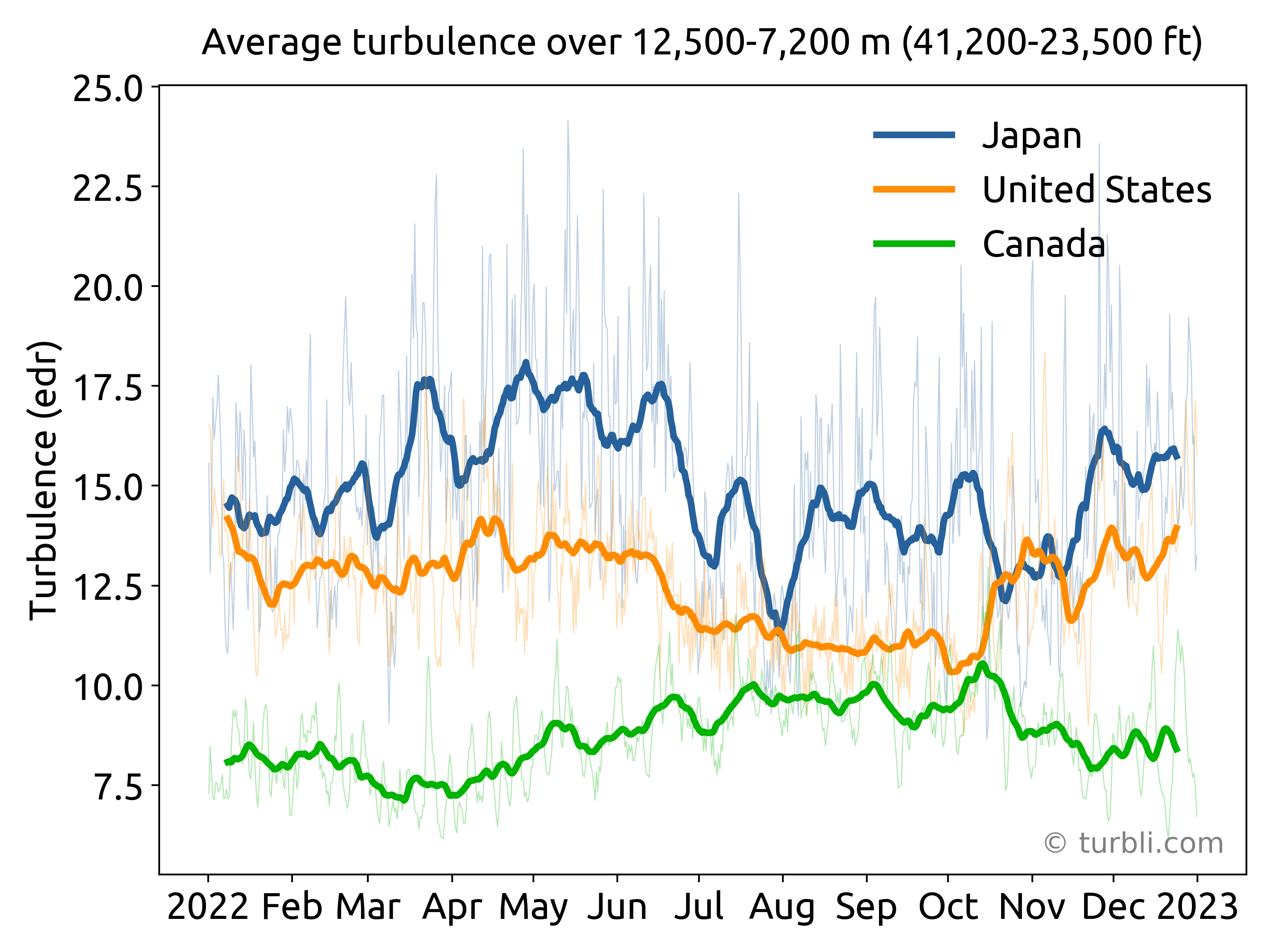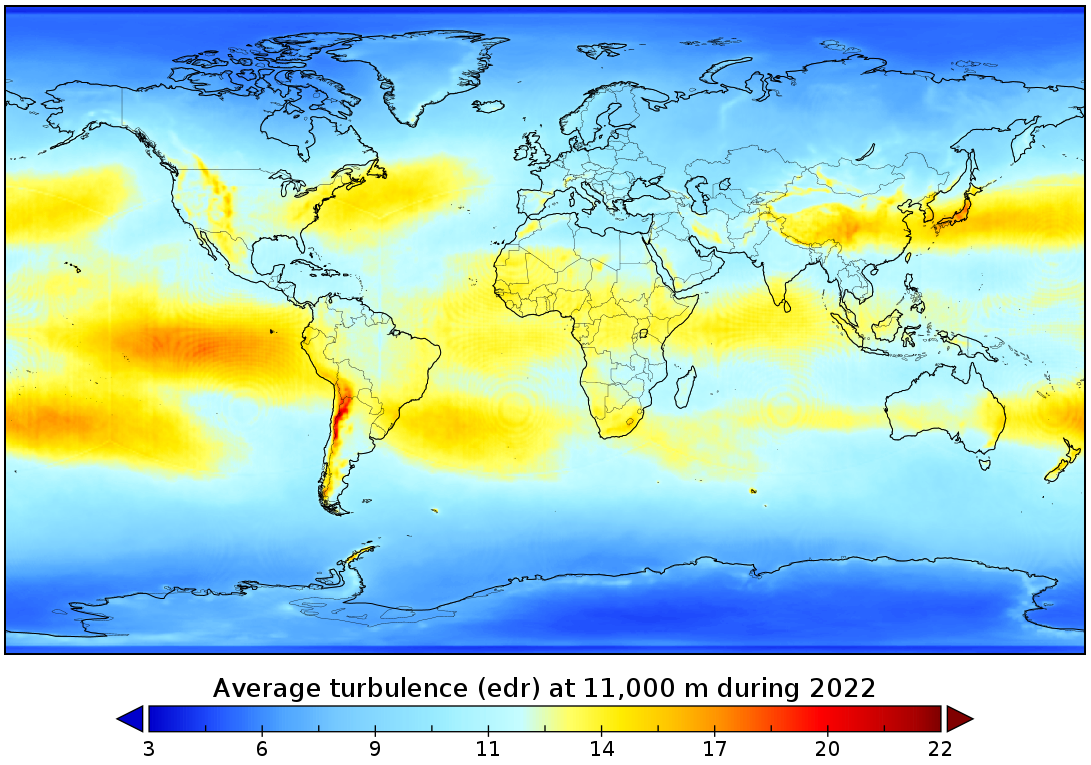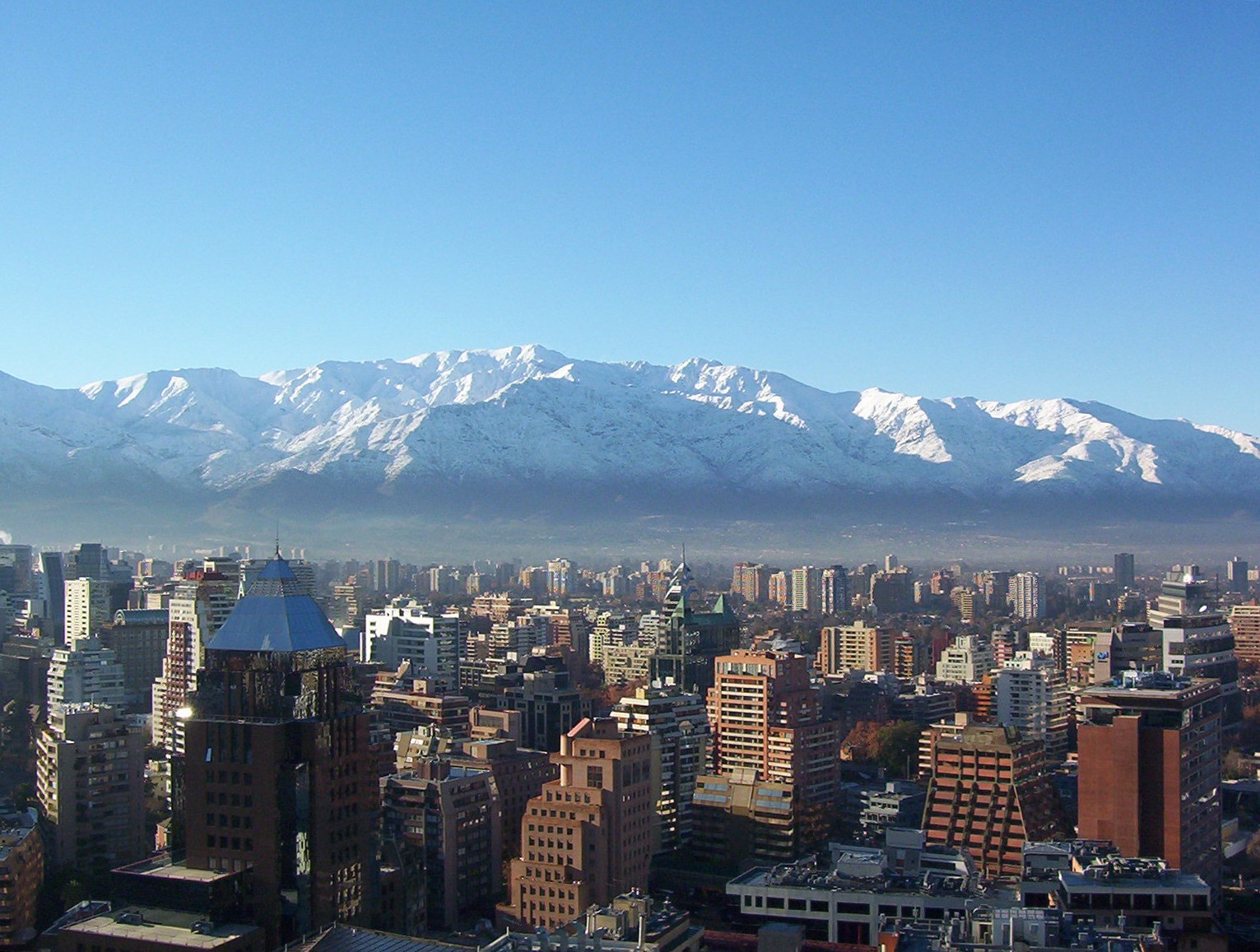
The Most Turbulent Routes and Airports of 2022
Hot summers, cold winters. Temperature has a clear seasonal behavior, but turbulence too! It can always appear unexpectedly, but since turbulence is generated by wind and temperature differences, it also follows the seasonal changes of these.
In this article we dig into our historical turbulence database to calculate the most turbulent routes and airports of 2022.
Seasonal changes of turbulence
The Atlantic Ocean is a good example of seasonal turbulence. During winter, the jet stream intensifies and leads to stronger turbulence. For the North Atlantic these are the months from December to March, and for the South Atlantic from June to September.

Mountains and oceans induce regional effects in the jet stream patterns, leading areas with stronger turbulence than others. Japan is a good example of this, with much higher values of turbulence than other countries at similar latitudes such as Canada and the United States. During 2022, Japan was on average the most turbulent country in the world.

Average world turbulence map of 2022
The map below present the average turbulence during year 2022. The units of the turbulence in the map and other rankings is the edr (eddy dissipation rate). In fluid mechanics, this unit has already been used for a long time to characterize turbulence. In recent years the aviation industry has also adopted it for both forecasts and aircraft measurements.
The Equator is a well-known region for turbulence due to the strong upward currents and thunderstorm activity. Next in line are the subtropical and polar jet stream areas at the latitudes of Europe, United States, Japan, etc. Above these, the jet stream activity is weaker and turbulence tends to be negligible over Canada, northern Russia and Antarctica (expect the Antarctic peninsula).
At lower altitude turbulence is dominated by mountain wave activity, where the Rockies, Andes, Himalayas, Zagros and Hoggar are the most prominent.

Routes with highest turbulence
The most turbulent routes at each continent are listed below. For more details, check our full ranking of most turbulent routes.
North America
Boston (BOS) - Halifax (YHZ): 14.399 edr
South America
Santiago (SCL) - Santa Cruz (VVI): 17.295 edr
Europe
Zurich (ZRH) - Milan (MXP): 14.942 edr
Asia
Tokoname (NGO) - Natori (SDJ): 17.077 edr
Oceania
Sydney (SYD) - Brisbane (BNE): 15.473
Africa
Cape Town (CPT) - Durban (DUR): 14.403 edr
The turbulence in the North American route of Boston to Halifax is mainly caused by jet stream activity over the North Atlantic. On the other hand, the turbulence in South American route of Santiago to Santa Cruz route is generated by mountain waves from the Andes. Mountain waves tend to be stronger when the wind flows perpendicular to them. The Andes has a perfect orientation for these waves, since the winds flowing from the Pacific to the Atlantic are almost perpendicular to the range. Santiago to Santa Cruz was in fact the most turbulent route in the entire world during 2022!

The European route from Zurich to Milan is a very short flight of just 200 km. Similar to the Andes is South America, the turbulence here is mainly caused by the Alps range, which, even if it does not have as the “perfect” orientation for mountain waves as the Andes, it still generates a great deal of turbulence. A similar effect is induced by Australia’s Great Dividing Range for the Oceanic route from Sydney to Brisbane.
Even if the route with highest turbulence during 2022 was in South America, the 8 out of the top 10 routes with highest turbulence were all in Japan. Tokyo to Osaka is famous for its turbulence, but the less busy route of Tokoname to Natori was even higher. In Africa, the turbulence in South African route from Cape Town to Durban is a combination of jet streams and mountain waves.
The New York to London route
The New York to London route has sometimes been credited as one the most turbulent in the world. This is attributed to the strong jet stream activity over the North Atlantic during the winter months. While turbulence can indeed be strong here, its average value during 2022 was 12.723 edr, a bit far from the top routes listed above. Seoul to Dallas, another common route credited with strong turbulence, had a 11.16 edr during 2022.
The reason for placing the mentioned routes at the top is probably that they are busy corridors that appear in the media whenever a bumpy flight occurs. Without data, there are probably no many other ways of deciding which route is more turbulent. The data analysis done here helps to overcome this issue!
Airports with highest turbulence
Since airports cover a smaller area than a flight route, their average yearly turbulence tends to be higher than over a long route. At the ground level of airports, the dominant source of turbulence are mountain waves, since jet streams are at much higher altitudes. Severe turbulence from mountain waves tends to be stronger than from jet streams, also contributing to a higher average value.

Analyzing the airports by continent, the most turbulent airports are as shown below. For more details, check our full ranking of most turbulent airports
North America
Denver (DEN): 32.556 edr
South America
Santiago (SCL): 31.513 edr
Europe
Athens (ATH): 33.299 edr
Asia
Xigazê (RKZ): 34.827 edr
Oceania
Perth (PER): 29.996 edr
Africa
Algiers (ALG): 27.862 edr
Ask any frequent flier in the United States, and they will likely point to Denver (and Salt Lake city) as a common place for a turbulent takeoff and landing. This is due to its proximity to the Rockies and to US highest peak: Mount Elbert's 4,400 m (14,000 ft). In a similar fashion, the Andes rage makes Santiago de Chile as the top destination for bumpy takeoff. The views from Santiago are famous by the impressive landscape of the Andes.
The Xigazê airport located in the Chinese Tibetan plateau is at an elevation of 3,800 m (12,400 ft), one of the highest in the world. Having the Himalayas range right beside it does not help in terms of turbulence, which actually makes it the most turbulent airport in the world for 2022!
The Atlas Mountains are not as tall as the Himalayas, but enough to make Algiers airport the most bumpy one in Africa. The European airport of Athens and the Oceanic of Perth do seem to owe their turbulence to a major mountain rage beside them, but to small changes in terrain that cause increases in turbulence.

